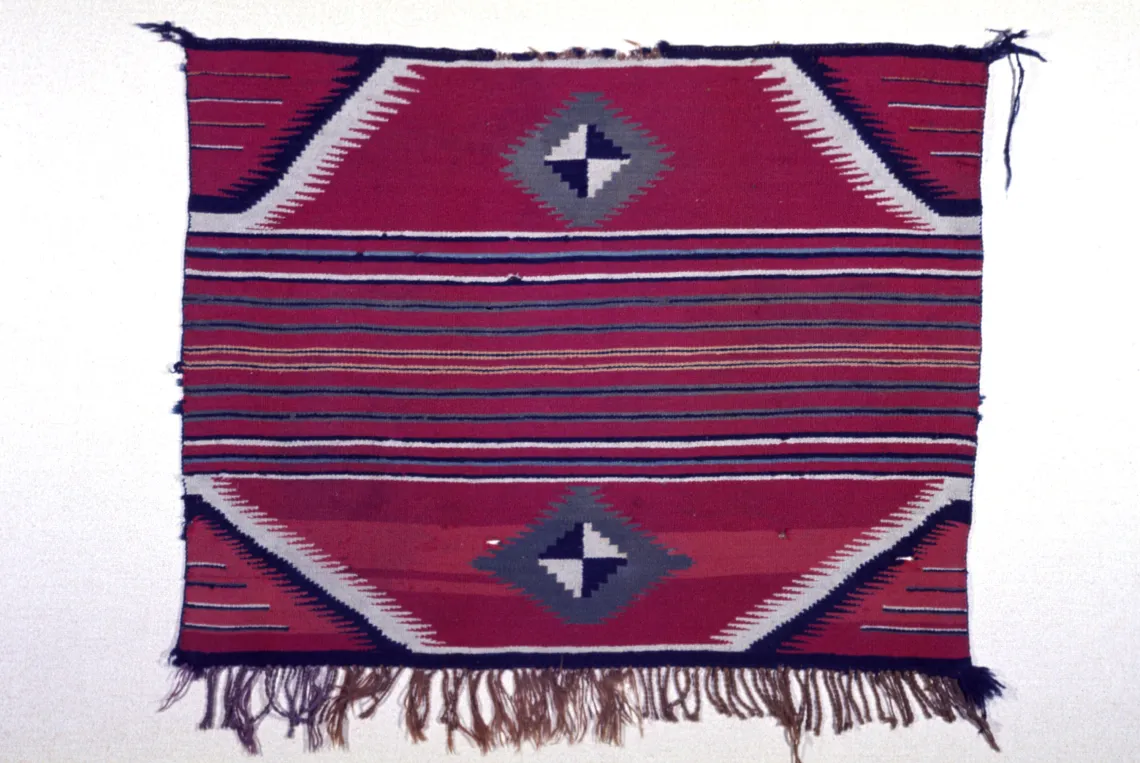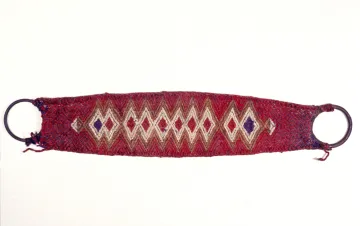
Above:
Late Classic single saddle blanket
ca. 1870-1875
Tapestry weave, interlocked joins
0.795 x 0.68 m; Fringe 0.060 m
26.772 x 31.299 in.; Fringe 2.362 in.
Catalog No. 22081
“General John A. Logan, a U.S. senator from Illinois, probably collected this blanket while visiting the Southwest as a member of the Senate Indian Affairs Committee around 1880-1882.
Early single saddle blankets are rare. Fancy blankets like this were made to use on top of a saddle—for show—and were sold to travelers as curios.
This blanket’s commercial 3-ply yarns were manufactured in Germantown, Pennsylvania, from the late 1860s to about 1875, when 4-ply mill-spun yarn replaced the earlier version. Weavers obtained the yarns from local trading posts.” —Ann Hedlund
| Function | Fiber | Type | Ply-Spin-Twist | Color | Dye | Count * | ||
|---|---|---|---|---|---|---|---|---|
| Warp | Wool | Commercial | 3 | s | Z | Gold | ? | 13 |
| Warp | Wool | Commercial | 3 | s | Z | Purple | Synthetic | 13 |
| Weft | Wool | Commercial | 3 | z | S | Red | Synthetic | 46 |
| Weft | Wool | Commercial | 3 | z | S | Orange-Red | Synthetic | 46 |
| Weft | Wool | Commercial | 3 | z | S | Yellow-Orange | Synthetic | 46 |
| Weft | Wool | Commercial | 3 | z | S | Forest Green | Indigo+Native | 46 |
| Weft | Wool | Commercial | 3 | z | S | (Golden Yellow?) | Vegetal | 46 |
| Weft | Wool | Handspun | -- | Z | -- | Dk Blue | Indigo | 46 |
| Weft | Wool | Handspun | -- | Z | -- | White | None | 46 |
| Weft | Wool | Handspun | -- | Z | -- | Lt Blue | Indigo | 46 |
| Ecord | Wool | Handspun | 3 | z | S | Dk Blue | Indigo | 2 |
| * threads/inch | ||||||||






